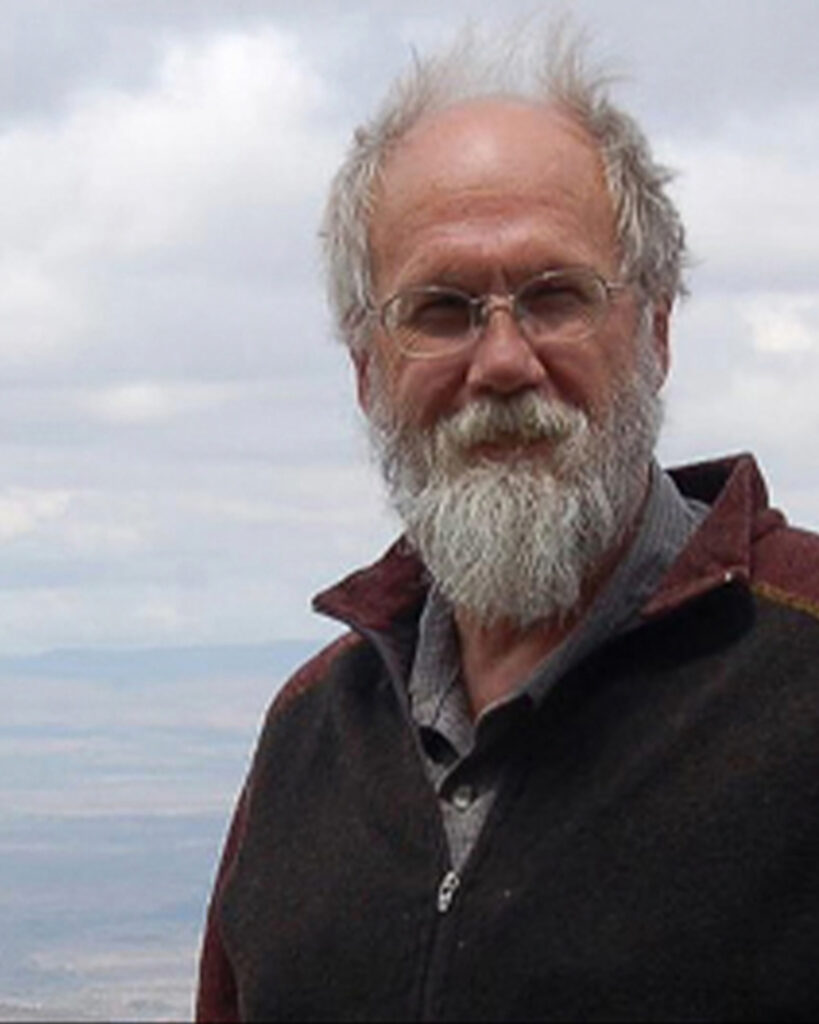a ‘goblin prince’ among dinosaurs
June 25, 2025
Above: Artistic reconstruction of Bolg amondol, depicted raiding an oviraptorosaur dinosaur nest amidst the lush Kaiparowits Formation habitat. Credit: Cullen Townsend
A newly discovered, raccoon-sized armored monstersaurian from the Grand Staircase-Escalante National Monument in Southern Utah, United States, reveals a surprising diversity of large lizards at the pinnacle of the age of dinosaurs.
Named for the goblin prince from J.R.R. Tolkien’s “The Hobbit,” the new species Bolg amondol also illuminates the sometimes-murky path that life traveled between ancient continents.
“I opened this jar of bones labeled ‘lizard’ at the Natural History Museum of Utah, and was like, oh wow, there’s a fragmentary skeleton here,” said lead author Hank Woolley from the Natural History Museum of Los Angeles County’s Dinosaur Institute. “We know very little about large-bodied lizards from the Kaiparowits Formation in Grand Staircase-Escalante National Monument in Utah, so I knew this was significant right away.”
Published on June 17, 2025, in the journal Royal Society Open Science, the collaborative research led by the Dinosaur Institute and the Natural History Museum of Utah (NHMU) reveals hidden treasures awaiting future paleontologists in the bowels of museum fossil collections, and the vast potential of paleontological heritage preserved in Grand Staircase-Escalante National Monument and other public lands.
“Discovering a new species of lizard that is an ancestor of modern Gila monsters is pretty cool in and of itself, but what’s particularly exciting is what it tells us about the unique 76-million-year-old ecosystem it lived in,” said co-author Randy Irmis, associate professor of geology and geophysics at the University of Utah and curator of paleontology at NHMU. “The fact that Bolg co-existed with several other large lizard species indicates that this was a stable and productive ecosystem where these animals were taking advantage of a wide variety of prey and different micro-habitats.”
A Middle Earth-inspired moniker
Bolg represents an evolutionary lineage that sprouted within a group of large-bodied lizards called monstersaurs, which still roam the deserts from which Bolg was recovered. Woolley knew that a new species of monstersaur called for an appropriate name from an iconic monster creator, Tolkien.
“Bolg is a great sounding name. It’s a goblin prince from ‘The Hobbit,’ and I think of these lizards as goblin-like, especially looking at their skulls,” said Woolley. He used the fictional Tolkien Elvish language Sindarin to craft the species epithet. “Amon” means “mound,” and “dol” means “head,” a reference to the mound-like osteoderms found on Bolg’s and other monstersaur’s skulls. “Mound-headed Bolg” would fit right in with the goblins—and it’s revealing quite a bit about monstersaurs.
Hidden gems in collection drawers
The Bolg amondol discovery highlights the likelihood that more large-bodied lizards existed during the Late Cretaceous Period than previously thought. Bolg, along with other fossils from the Kaiparowits Formation, demonstrates that at least three types of predatory lizards lived in the Late Cretaceous sub-tropical floodplains of what is now Southern Utah. Additionally, this finding shows that unexplored diversity is waiting to be dug up both in the field and in paleontology collections.
“Bolg is a great example of the importance of natural history museum collections,” Irmis said. “Although we knew the specimen was significant when it was discovered back in 2005, it took a specialist in lizard evolution like Hank to truly recognize its scientific importance and take on the task of researching and scientifically describing this new species.”The researchers identified the new species from tiny pieces of skull, limbs, girdles, vertebrae and bony armor called osteoderms. Most fossil lizards from the age of dinosaurs are even scrappier—often just single, isolated bones or teeth—so despite their fragmentary nature, the parts of Bolg’s skeleton that survived contain a stunning amount of information.
“That means more characteristics are available for us to assess and compare to similar-looking lizards. Importantly, we can use those characteristics to understand this animal’s evolutionary relationships and test hypotheses about where it fits on the lizard tree of life,” Woolley said.
Read the full story by Lisa Potter in @TheU.
 bachelor’s in geology at the University of Michigan and went to UC Santa Cruz for a PhD in earth science. Bowen came to the U as a postdoc before joining Purdue University as a faculty member for seven years. He returned to the U through the
bachelor’s in geology at the University of Michigan and went to UC Santa Cruz for a PhD in earth science. Bowen came to the U as a postdoc before joining Purdue University as a faculty member for seven years. He returned to the U through the 






 Over the course of an academic career spanning five decades, the University of Utah geoscientist has developed numerous forensic tools, such as isotope analysis, for understanding geological processes that affected the course of life on Earth, according to presentations given Saturday at a symposium to reflect on the contributions of Cerling, who is retiring this year.
Over the course of an academic career spanning five decades, the University of Utah geoscientist has developed numerous forensic tools, such as isotope analysis, for understanding geological processes that affected the course of life on Earth, according to presentations given Saturday at a symposium to reflect on the contributions of Cerling, who is retiring this year.
